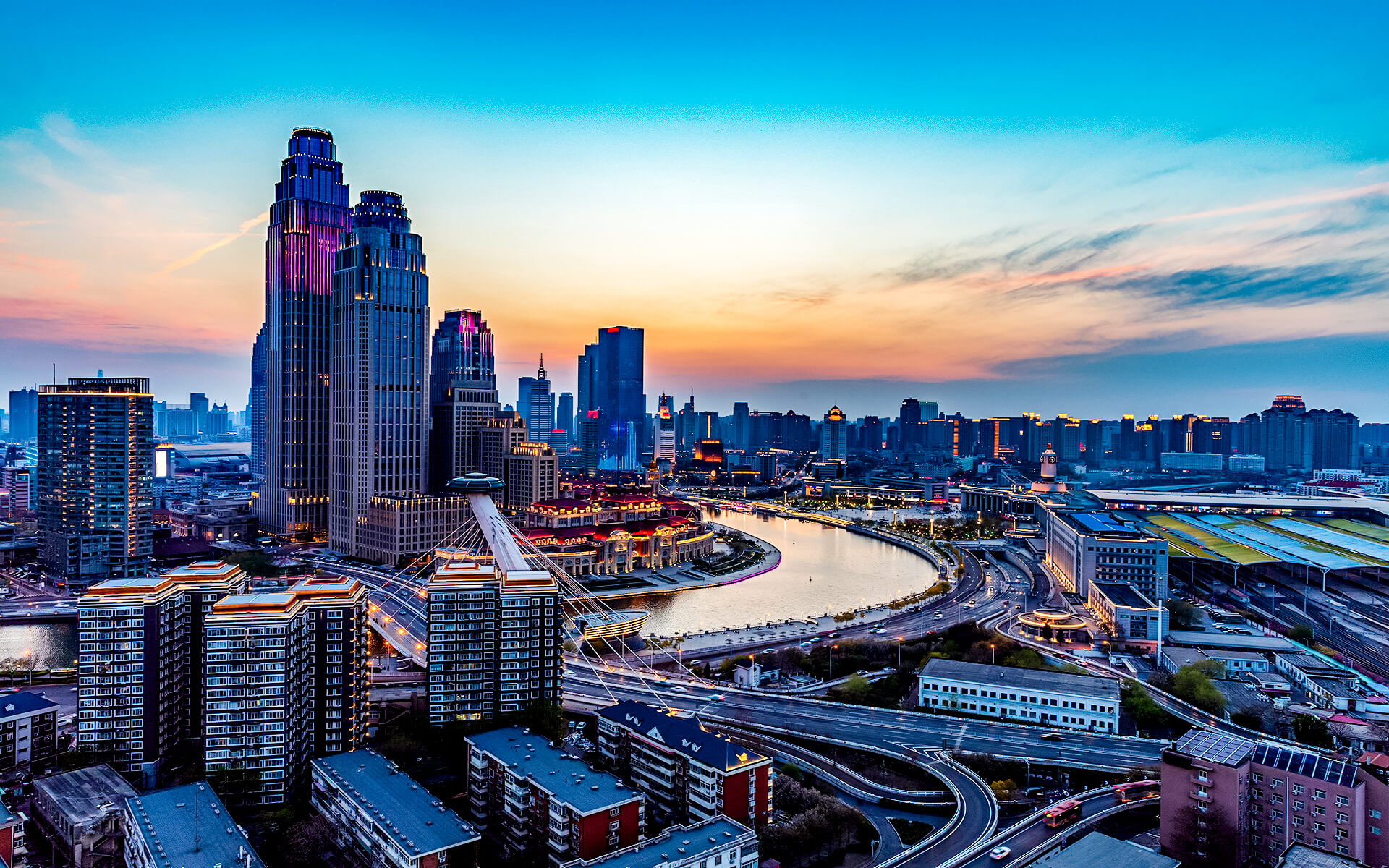Tianjin’s GDP reached 1.572 trillion yuan in 2014, a 10.0 percent rise over 2013. Tianjin had the highest per-capita GDP in China, at $17,126, followed by Beijing at $16,278 and Shanghai at $15,847.
In 2009, the municipality’s GDP increased by 16.5 percent, behind just the 16.9 percent pace in resource-rich Inner Mongolia and almost double the national growth rate. Infrastructure expenditure will help Tianjin’s economy in the near run. There are major efforts underway to expand the metro system as well as enhance road and rail connections to the adjacent national capital, Beijing.
Despite the fact that the worldwide financial crisis has spread swiftly and the rate of global economic development is decreasing, the Tianjin economy continues to expand at a steady and rapid pace. Tianjin’s total production value in 2008 was RMB 635.438 billion, an increase of 16.5 percent, or RMB 130.398 billion, over the previous year, the first time with an increase of more than RMB 100 billion. Tianjin’s total production value per capita was US$7,800, approaching the threshold of middle-developed nations. Tianjin has achieved a direct contractual foreign investment of up to $13.256 billion, a 15.1 percent rise, and actual contributed capital of $7.420, a 40.6 percent increase year on year. Tianjin has had 21,048 foreign-invested enterprises thus far, totaling $47.2 billion in total foreign investment.
Simultaneously, Tianjin is vigorously pursuing financial reform and innovation. By the end of 2008, the China Bohai Bank, the first national commercial bank limited by shares with headquarters in Tianjin, had opened six branches and 14 public offices. Following State Council clearance, the national non-listed public enterprises stock exchange market (OTC) was formed in Tianjin in March 2008. Tianjin has emerged as China’s pilot city with the greatest industrial investment money. The China National Private Equity Forum was hosted in Tianjin once again, with over 500 investment businesses and private fund institutions, as well as approximately 2,000 rising enterprises, participating in global capital circulation through this Capital Connection in Tianjin. Tianjin considers futures sector growth to be an important aspect of its financial reform and innovation, owing to the city’s strong real goods exchange. The Yide Futures Broker Co. relocated its headquarters to Tianjin in July 2008. The Tianjin Finance Town Project, with North Jiefang Road as its axle, has begun. Within 10 years, it will have evolved into a complete, open, and intellectual financial service sector.
Tianjin is growing into a global center for international shipping and transportation, contemporary manufacturing, and R&D. Tianjin’s nominal GDP increased by 2.8 times from 184 RMB billion in 2001 to 505 RMB billion in 2007. Electronic information technology, automotive, biotechnology and pharmaceuticals, metallurgy, and petrochemicals are Tianjin’s main industries. The new coastal region, which includes Tianjin Port, Tianjin Economic and Technology Development Area, and Tianjin Bonded Area, has attracted several world-renowned companies like as Motorola, Toyota, and Samsung. Globalization and the opening up of the economy to the rest of the world have had a significant impact on Tianjin’s economic development.
Tianjin’s government finance income more than tripled from 16 RMB billion in 2001 to 54 RMB billion in 2007. As income increased, so did spending on research and technology, education, culture, health, and sports, reaching 10 billion RMB in 2004, accounting for 30.7 percent of the city’s financial expenditure. Revenue has also been utilized to construct infrastructure such as new roads, bridges, and commercial buildings. One of the 11th Five-Year Plan’s development goals is to have financial income expand at a pace of 16 percent each year.
Tianjin’s overall fixed-asset investments climbed from 62 RMB billion in 2001 to 239 RMB billion in 2007, reflecting a 3.9-fold growth over a six-year period. Tianjin has established competitive advantages in the investment environment by providing accessible port transportation services, an open market, innovative logistic services, enticing preferential policies, and efficient government services. By the end of 2004, more than 118 nations and regions had invested in Tianjin, resulting in the establishment of nearly 16, 000 businesses. Tianjin is now transforming into an eco-city, which opens up several opportunities for investments in fixed assets in the next years.


